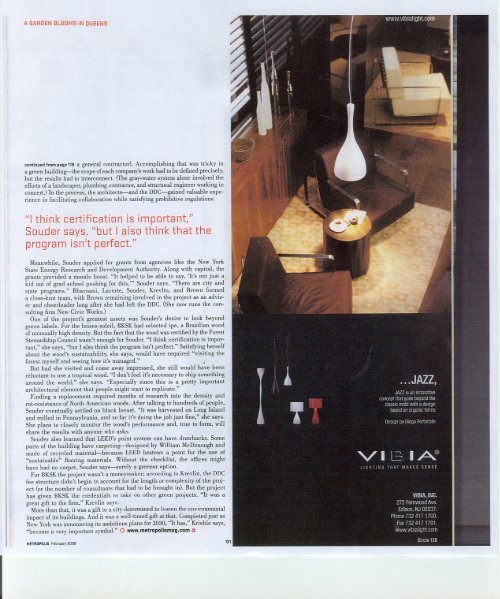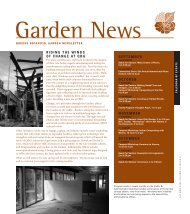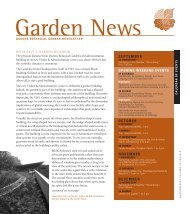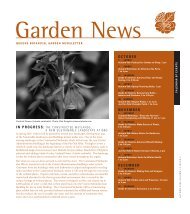Metropolis - Queens Botanical Garden
Metropolis - Queens Botanical Garden
Metropolis - Queens Botanical Garden
- No tags were found...
You also want an ePaper? Increase the reach of your titles
YUMPU automatically turns print PDFs into web optimized ePapers that Google loves.
A GARDENBLDDMSIN OUEENScontinuedfrompage118a general contractor). Accomplishing that was tricky ina green building-the scope of each company's work had to be defined precisely,but the results had to interconnect. (The gray-water system alone involved theefforts of a landscaper, plumbing contractor, and structural engineer working inconcert.) In the process, the architects-and the DDC-gained valuable experiencein facilitating collaboration while satisfying prohibitive regulations."I think certification is important,"Souder says, "but I also think that theprogram isn't perfect."Meanwhile, Souder applied for grants from agencies like the New YorkState Energy Research and Development Authority. Along with capital, thegrants provided a morale boost. "It helped to be able to say, 'It's not just akid out of grad school pushing for this,''' Souder says. "There are city andstate programs." Bhavnani, Lacerte, Souder, Krevlin, and Brown formeda close-knit team, with Brown remaining involved in the project as an adviserand cheerleader long after she had left the DDC. (Sh~now runs the consultingfirm New Civic Works.)One of the project's greatest assets was Souder's desire to look beyondgreen labels. For the brises-soleil, BKSK had selected ipe, a Brazilian woodof unusually high density. But the fact that the wood was certified by the ForestStewardship Council wasn't enough for Souder. "I think certification is important,"she says, "but I also think the program isn't perfect." Satisfying herselfabout the wood's sustainability, she says, would have required "visiting theforest myself and seeing how it's managed." ,But had she visited and come away impressed, she still would have beenreluctant to use a tropical wood. "I don't feel it;s necessary to ship somethingaround the world," she says. "Especially since this is a pretty importantarchitectural element that people might want to replicate."Finding a replacement required months of research into the density androt-resistance of North American woods. Mter talking to hundreds of people,Souder eventually settled on black locust. "It was harvested on Long Islandand milled in Pennsylvania, and so far it's doing the job just fine," she says.She plans to closely monitor the wood's performance and, true to form, willshare the results with anyone who asks.Souder also learned that LEED's point system can have drawbacks. Someparts of the building have carpeting-designed by William McDonough and. made of recycled material-because LEED bestows a point for the use of"sustainable" flooring materials. Without the checklist, the offices mighthave had no carpet, Souder says-surely a greener option.For BKSK the project wasn't a moneymaker; according to Krevlin,the DDCfee structure didn't begin to account for the length or complexity of the project(or the number of consultants that had to be brought in). But the projecthas given BKSK the credentials to take on other green projects. "It was agreat gift to the firm," Krevlin says.More than that, it was a gift to a city determined to lessen the environmentalimpact of its buildings. And it was a well-timed gift at that. Completed.just asNew York was announcing its ambitious plans for 2030, "It has," Krieble says,"become a very important symbol." 0 www.metropolismag.com0METROPOLIS February 2008121








